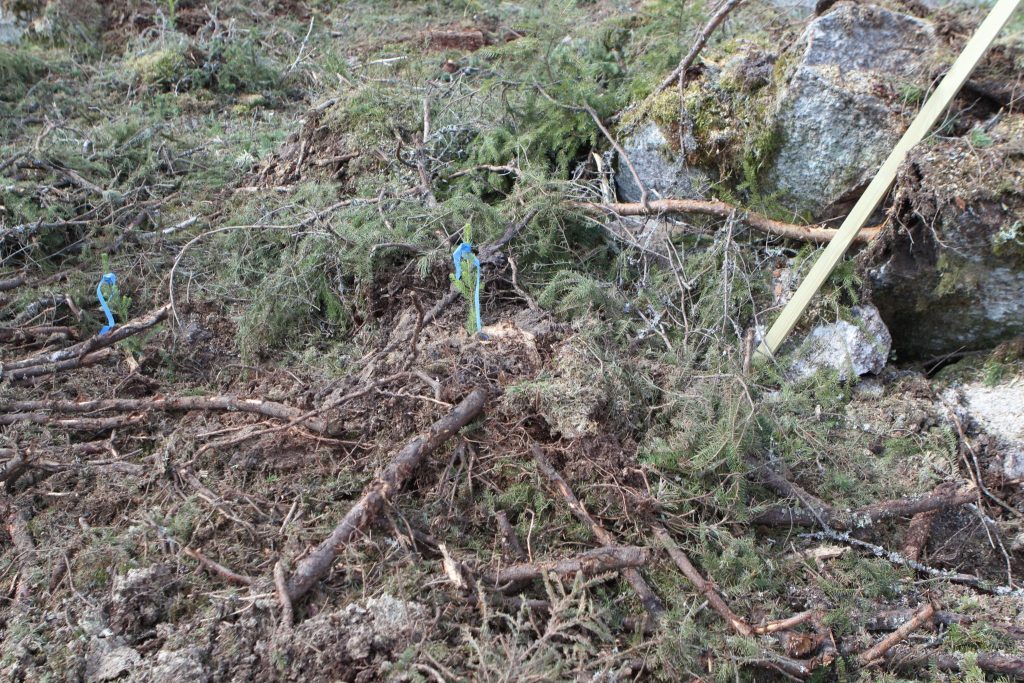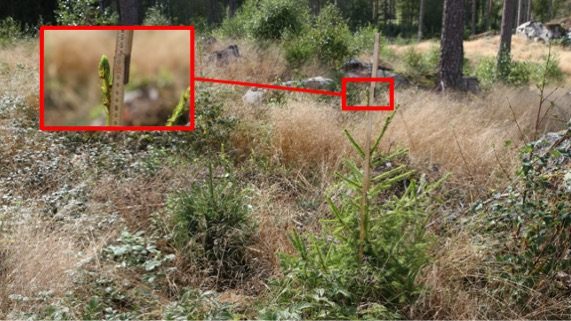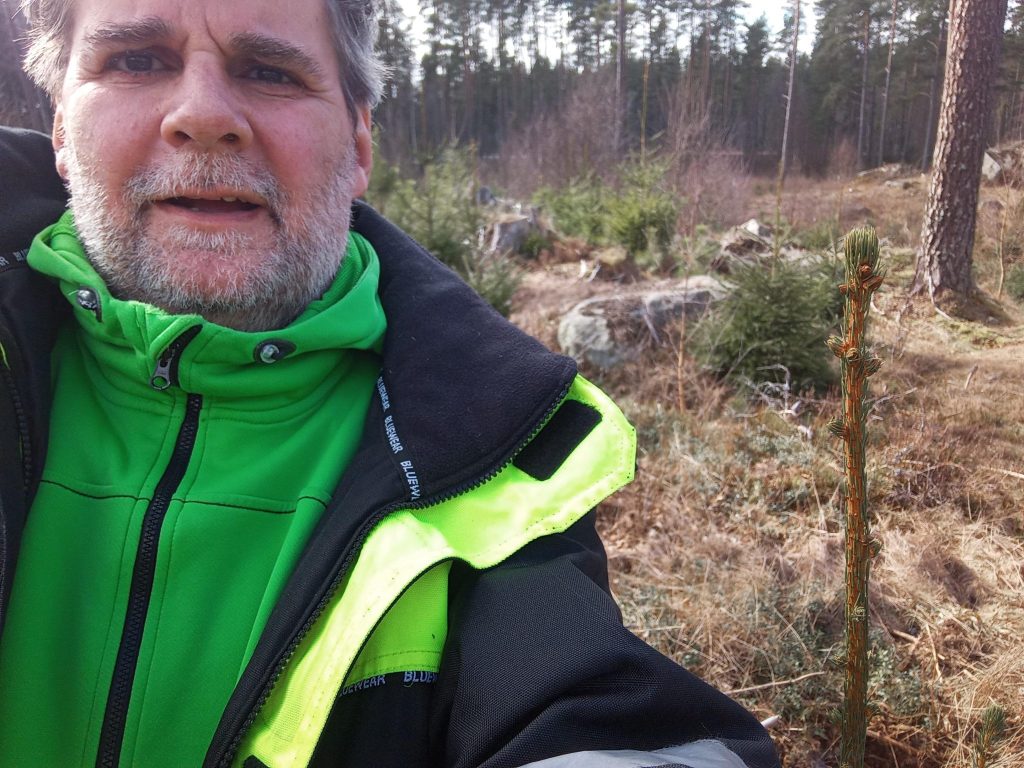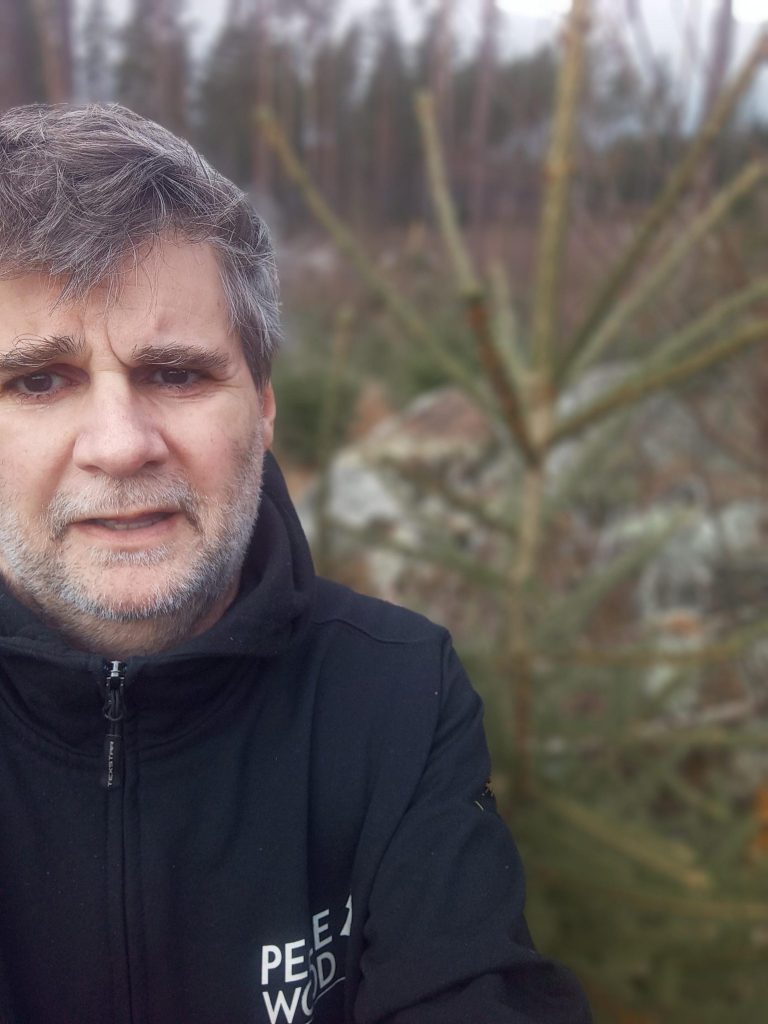Once upon a time, there was a machine demo that ended up in a lively discussion about ground preparation for plants. Which is the best? Trenching or mounding? The essential question, in this case, was in what condition a mound should be to be a good planting spot. The machine that was demonstrated at the time, was a mounder. The discussion was mainly between the mounder manufacturer, Bracke Forest’s, CEO, and a representative of the forest owners’ association Södra.
The story of a spruce plant
The discussion occurred over one of the mounds and the question was: Was this particular mound good enough to host a plant and make it grow into a tree? The question occurred because some branches were under the inverted turf and the critics, the Södra-people, claimed that it would cause the plant’s roots to dry out.
The Bracke Forest representatives (of which I was one at the time), claimed that it should be no problem. “An inverted turf never dries out as the humus layer under the turf act as a fertilizer. As the turf is inverted, the sun can’t reach it, so …”
The voice (noise-) level of the participants got higher, and it seemed as if consensus was far away. Suddenly the Bracke CEO took off and headed for the cars. Everybody, including me, was surprised and thought he was upset and left. But he didn´t. He soon came back with a plant and a planting pipe. He planted the plant on top of the mound in question and said: “I bet you that this plant will survive and grow into a tree.”
The bet was accepted even though the value of the bet never was discussed. I guess it was a question of honor. This happened in April 2016, and as I lived close by, I got the task of keeping an eye on the plant and documenting its progress. The plant even got a name; “Klas-Håkan’s Plant” named after the Bracke CEO.
The story continues
The summer of 2016 was quite dry in south Sweden where Klas-Håkan’s Plant was planted. I was busy doing other things during the summer and when I heard in August that Södra’s people were watching the plant I got nervous. Did it survive the dry summer?
It was August 2016 before I managed to visit the plant again. It had survived the dry summer and looked sound and healthy. I kept visiting it at least once a year as long as I worked for Bracke Forest.
I left Bracke Forest in December 2019. But as I find this interesting, and still live close to the plant, I keep on following it. However, I missed 2020, but in 2021 and 2022 I paid the famous plant a visit. The last time was just a few days ago. The plant is now taller than me and even though it has been grazed by deer, it has good prospects of becoming a big tree.
Different ground prep methods
About a year ago, I wrote about the ground preparation methods that we use here in Sweden. It´s often being discussed which method is the best. Most scientists and researchers claim that mounding is the best method. But the most common method, especially in south Sweden, is trenching. As in many other cases of discussion, the truth lies somewhere in between. Different types of soil conditions require different methods. The problem is that most machine owners only have one machine for ground preparation, and in most cases, that’s a trencher as they are more all-around. That is mainly why most sites in south Sweden are trenched for plant preparation.
The site where the above-mentioned plant is planted is interesting as the site next to it was prepared with a trencher. Only a forest road divides the two sites that were planted at the same time in spring 2016. We will have reason to come back to that in later articles. Comparing “research” is always interesting.
Photos: Per Jonsson, Klas-Håkan Ljungberg and Arnold Carlsson

















